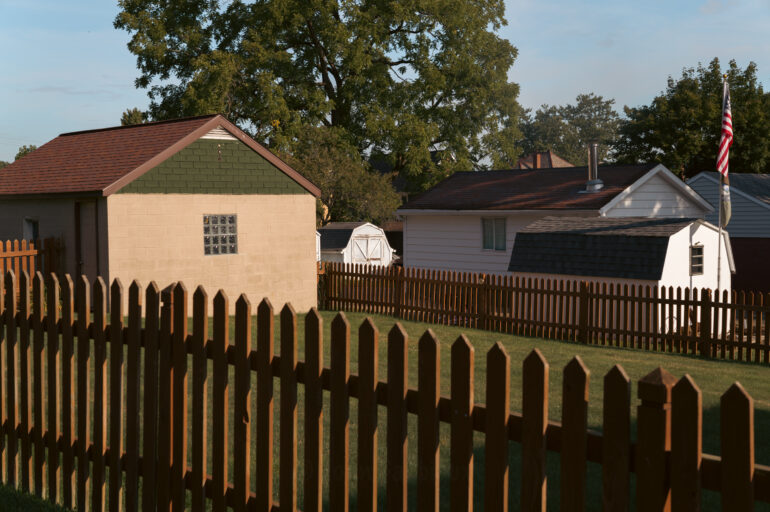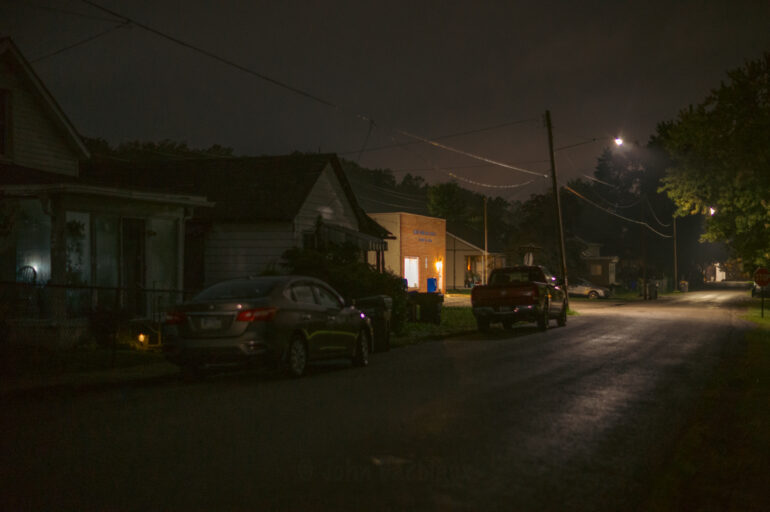“Haha… I’ve heard that before,” says photographer John Barbiaux to us when we asked him about his series, Life on Mars. “Personally, I think the towns are so beautiful and peaceful. The glow of the windows is a sort of connection with others in a seemingly disconnected world, a warmth of sorts.” Mars isn’t the planet, but instead, it’s a town. Despite this, his photos remind us a bit of both Todd Hido’s work and that of the great Stephen King — yet they meet at a totally different place in John’s work.
All images by John Barbiaux. Used with permission. Be sure to check out his website and DecisiveShot for more from John.
Admittedly, John has never read a King novel — after seeing a movie based on his work, John swore them off because of how scary it was. That aside, he reads relentlessly and draws inspiration from books. “I’m a big fan of John Steinbeck’s Travels with Charley in Search of America, for instance,” he tells us. “I grew up reading Louis L’Amour (westerns) novels which gave me a desire to explore small towns in America and the people that live in them. I would dream of going out west on adventures and often still do.” He also finds inspiration in movies.
“My dad would take me to the theater almost every weekend and I was obsessed with the cinematography. This is probably silly but I still remember the opening to the move Phenomenon with John Travolta. I don’t know why but I must have watched it a hundred times, it was like wrapping myself up in a warm blanket – if I was into that sort of thing…”
John’s origins in the art form are rather fascinating. Growing up, he was more interested in the act of photography than the actual photo itself. “I loved the tactile feeling/sound of cranking the film advance lever and pressing the shutter button of my parent’s old 35mm,” he told us. “It wasn’t until I was an adult that I started to explore it, mostly as a way to cope with the constant anxiety of my job during the financial turmoil of 2008 (my day job is finance). By then, I was interested in the actual image, so I signed up for a class at my local Ritz Camera store to learn how to use the manual settings on my camera (an Olympus Pen).” He wasn’t impressed with the class, so he went out trying to find another way to learn it. From there, he dove into books and started to blog about his work. After doing it for four years, an art director in Boston discovered him and commissioned him to do a gig.




John’s gear used to be super exhaustive — he’s been both a Nikon and a Leica lover. “These days, for the past few years, I don’t carry anything I can’t hang around my neck or stuff into a pocket,” he tells us. “I guess I would consider myself a bit of a minimalist photographer in regard to gear. I find less gear simplifies the creative process for me.” To that end, he only brings a Leica M11, Noctilux 50mm f1.2, two batteries, and a Lens Pen. Oh yeah, he prints too, using an Epson P900 printer!
I’ve found that one of the upsides of not constantly spending money on gear is that I have more money to invest in buying photo books and investing in other artists careers.
When creating the images for Life on Mars, John mostly went along with the flow. In fact, it’s his first personal project in over a decade. In 2020, he paused all projects due to travel restrictions and started doing this. “I quickly learned the more I thought about things and tried to give myself parameters, the more my work felt contrived,” he tells us. “After a few months, I started to simply grab my camera, hop in the car, and just follow my curiosity. Once I arrived, wherever curiosity took me I would try to capture whatever it was that caught my attention from the viewpoint that it initially caught said attention as opposed to ‘working the scene.'” To that end, John tried to open himself up to whatever was in front of him.
The series is a documentary-style piece that feels eerie, ethereal, and beautiful all at the same time. It’s very human work — and that’s felt throughout the entire series.


With that said John acknowledges that things like AI imagery are here to stay. “Unfortunately, at this point, A.I. photography feels akin to theft in that it scrapes the internet/resources for photos that others have created without their consent, merges bits and pieces of them together to adhere to the prompts it was given, and spits out the result,” he expresses. “Since it’s unlikely we can put the toothpaste back into the bottle, so to speak, I’d love to see two main things happen. First, anyone using the images should make it known instead of trying to pass them off as their own.” Of course, he believes that this is all about integrity.
He also thinks that the AI industry as a whole should be held accountable for infringing on others’ intellectual property.
John believes that there’s always going to be a market for authentic photographs no matter what.


